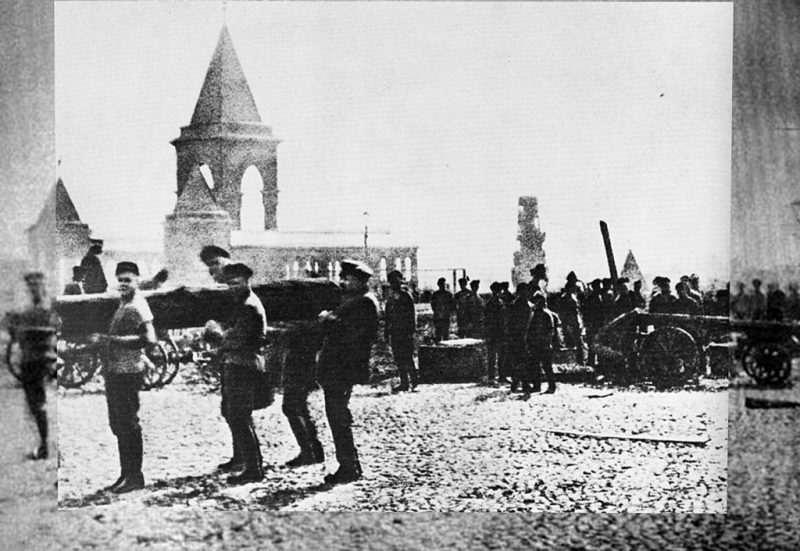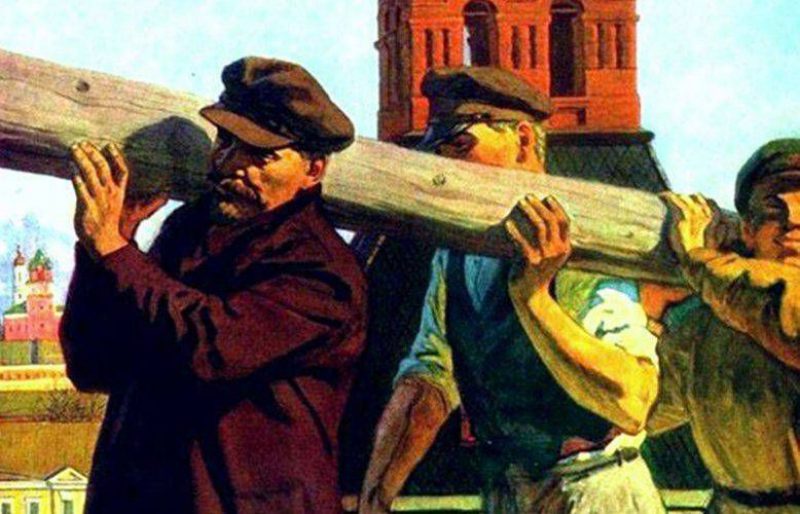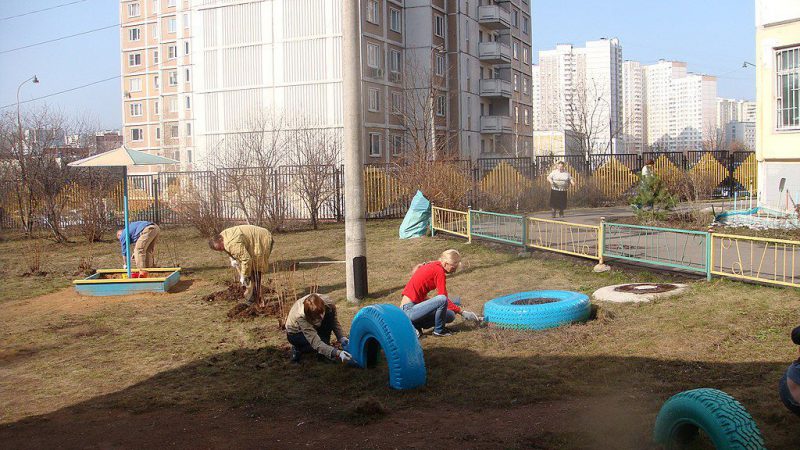Subbotnik – Useful legacy of Soviet times
In 2021, it will be 30 years since the Soviet Union ceased to exist. Modern Russia is a completely different country with a new face and a new approach to many things. However, some things that Russia inherited from the USSR still live and even benefit the whole Russian society. One of these things are subbotniks. You don’t know what subbotniks are? Read below and we will tell you all you need to know about them.

Subbotnik (суббо́тник) is a voluntary non-paid collective work for a socially useful cause. The name “subbotnik” comes from the word суббо́та that means Saturday, as these works initially were held on Saturdays.
But let us start from the beginning…
The first meaning of the word subbotnik
In fact, subbotniks existed way before Soviet Union, although the name was associated not with performing useful work but with a collective punishment.
The first time the concept of subbotniks arose, it was among high school students in the Russian Empire. Students who during school week got bad grades, skipped classes or broke some school rules, had to pay for it by being whipped (corporal punishment was widely accepted in Imperial Russia). These collective punishment was happening on Saturdays and called subbotniks.
Soviet subbotniks
The concept of subbotniks has changed with the advent of Soviet power.
The official version tells that first subbotnik, as we understand it now, happened in the spring of 1919 on the background of ongoing Civil War and military intervention. Vladimir Lenin addressed workers with a call to improve the work of railways. 15 communists of the Moscow-Sortirovochny depot of the Moscow-Kazan railway heard the address of the leader and decided to work all Saturday night from 11 to 12 of April. Having worked for 10 hours for free, they repaired 3 steam locomotives and showed an example to others.
On May 10, 1919, the first mass communist subbotnik took place on the Moscow-Kazan Railway. 205 people took part in it. On that day, workers repaired 4 steam locomotives and 16 wagons, plus did a great job of loading and unloading wagons. Labor productivity was 270% higher than usual. Later that month, subbotniks were held on the Aleksandrovskaya, Nikolaev, Ryazan-Ural, Moscow-Vindavskaya, Kursk railways. Following the railway workers, subbotniks were carried out by workers of factories and plants in Moscow and other cities.
In June, Vladimir Lenin wrote his famous article “The Great Initiative” about the heroism of the workers:
“The arrangement of the workers of the communist subbotniks by their own initiative has a gigantic significance […] Apparently, this is just the beginning, but this is the beginning of unusually great importance. This is the beginning of a coup: more difficult, more substantial, more fundamental, more decisive than the overthrow of the bourgeoisie, because it is a victory over one’s own stagnation, licentiousness, petty-bourgeois egoism, over those habits that cursed capitalism left as a legacy to the workers and peasants.”
On May 1, 1920, the All-Russian Subbotnik-May-Day was held. Only in Moscow, 425 thousand people took part in this subbotnik. In Kremlin, Vladimir Lenin himself went out to clean up the Kremlin’s territory and? according to the official story, was carrying logs for four hours. This episode was later disseminated on dozens of paintings and posters. Since then, subbotniks have become a tradition.


At the beginning, subbotniks were voluntary, and mainly communists, Komsomol members, and the so-called “sympathizers” took part in them. Subbotniks were considered as one of the means of communist education of the masses. Subsequently, subbotniks turned from voluntary to voluntary-compulsory. It was impossible to refuse an important public affair: those who tried to evade were harshly condemned.
The frequency of subbotniks was variable. Sometimes subbotniks could be held every week, sometimes only several times a year. The main ones were the All-Union Leninist Communist Subbotniks, which were held in honor of the leader’s birthday on April 22. They marked the final arrival of spring and were used to prepare for the celebration of May Day.
“Holidays of liberated labor”, as the subbotniks were called, used to happen not only on Saturdyas but on Sundays as well, and were held several times a year and accompanined the years of the restoration of the national economy, industrialization of the USSR, and years during the Second World War of 1941-1945 were. After the war, subbotniks were held all the way until the 1990s.
Subbotniks were carried out either at the place of work where people performed their usual daily job, or with a purpose to accelerate the construction of household facilities, clubs, schools, landscaping cities, etc. Subbotniks were also carried out at the place of residence, on the initiative of local authorities, and then people worked on the improvement of their native land performing various construction works: building and painting fences, planting lawns, creating and arranging flower beds, parks, and children playgrounds.
Subbotniks in modern Russia
With the collapse of the Soviet Union, voluntary-compulsory subbotniks disappeared as a phenomenon. In modern Russia and other countries, members of the Soviet Union, subbotnik is any work on improving the territory if it is carried out by non-specialized organizations. For example, many private and state enterprises carry out cleaning by the forces of their employees, and the management of educational institutions attracts pupils and students to subbotniks. These events are not always held on Saturdays.
The matter of subbitniks is not limited to the level of enterprises, organizations and universities. There are also citywide and countrywide subbotniks.
Sometimes, especially in the spring, subbotniks for planting trees and cleaning the territory are held by residents around the buildings they live in.

For example, in April, subbotniks are traditionally held to clean up the territory in Moscow and other cities. Special cars with special uniforms and equipment drive around the city – anyone who wants to participate can get the uniform and tools and help to clean the city parks, boulevards, shopping centers, creative clusters, libraries, museums, residential buildings, public transport stops and other facilities.
Conclusion
Contrary to Soviet subbotniks, modern ones are totally voluntary and have no consequences for those who does not want to participate. They serve a great deal to the local communities and help people unite by doing work beneficial to everybody.
What do you think about the subbotniks? Do you have subbotniks or similar things in your country or community? Tell us in the comments!





